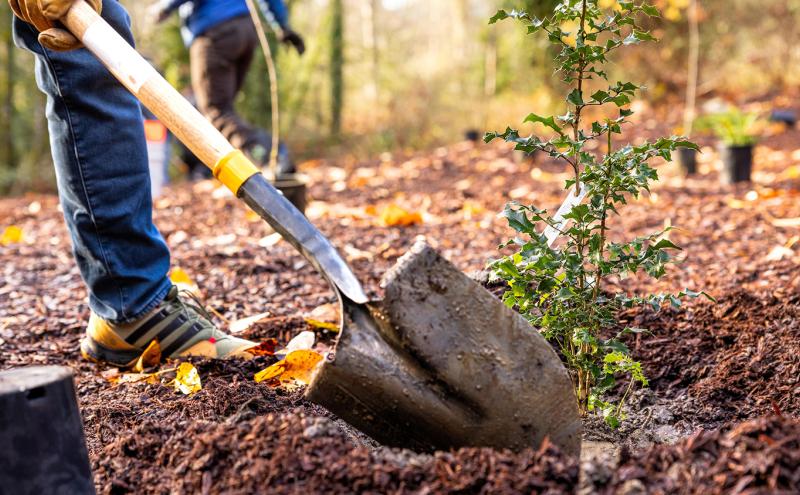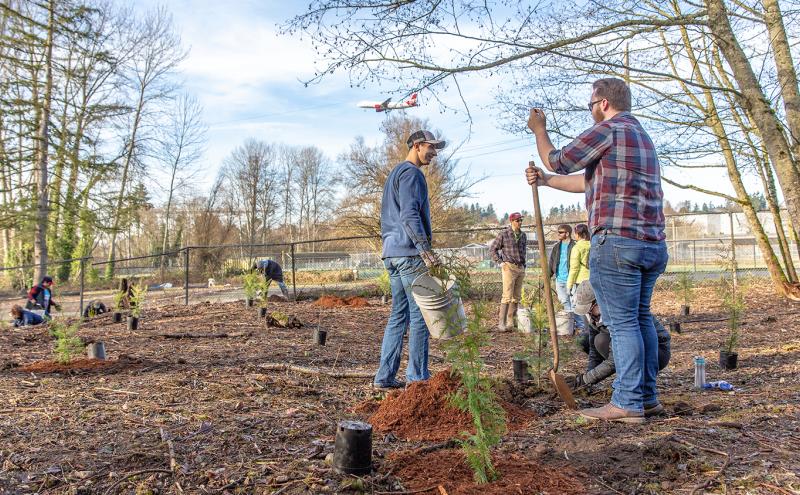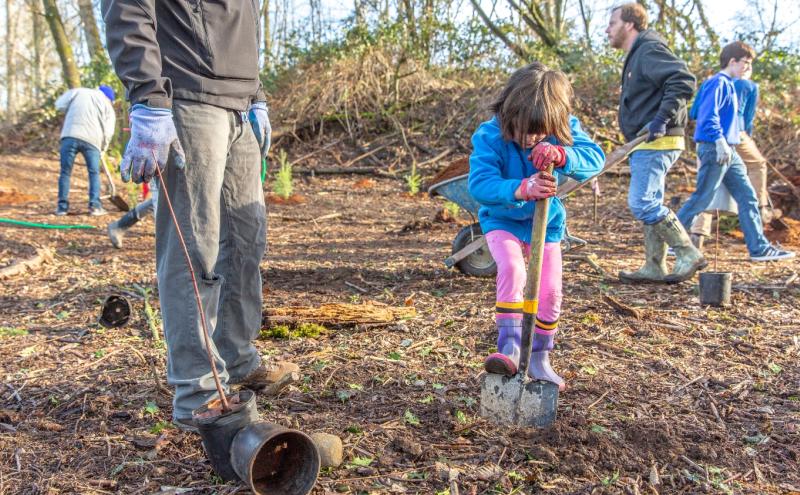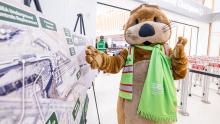
The Port of Seattle plays a vital role in our region's economy, connecting us to the world and generating jobs. We also recognize the importance of safeguarding our natural environment. That's why in July, we adopted land stewardship principles to guide our management practices, and from there, developed two strategies: the SEA Airport Land Stewardship Plan (LSP) and SEA Tree Replacement Standards (Standards).
In November 2023, we held a community webinar to review these strategies and encourage people to comment. Based on community feedback, we extended the comment period until January to ensure community members had enough time to review and respond with comments. About 40 people attended the webinar, and we received over 25 comments and email submissions. While not all comments necessitated changes to the draft plan, valuable opinions and questions were raised. We heard from many about the desire for the Port to prioritize environmental protection, transparency, and community well-being in its land management practices. We've summarized key themes and questions below, along with our responses.
How does tree replacement compensate for losing the environmental benefits of mature trees?
Mature trees offer valuable benefits, and the Port prioritizes retaining existing trees whenever possible. Through the Tree Replacement Standards, we'll only remove trees when necessary for development or safety and retain existing trees on development sites when feasible. We take a holistic approach to replacing trees that goes beyond just planting replacement trees by restoring healthy forests and other habitat. We feel this approach will not only replace the function of cleared trees over time but also result in higher-functioning forests and habitat overall. Tree replacement priorities include:
- Replacing trees in locations with the greatest community benefit
- Maximizing canopy potential on development sites to increase tree canopy and forest health in green spaces by removing invasive vegetation, protecting existing mature trees threatened by vegetation, and planting trees and shrubs to restore a native forest community
Will a comprehensive inventory of existing trees and habitats be created?
Absolutely! The Port already maintains an extensive land stewardship database that tracks land use, tree/forest and other land cover, community equity attributes, and site-specific assessments of forest and other resources, all of which are documented in the LSP. Both the LSP and database are living resources that are updated with new information over time. The Port began inventorying individual trees in 2023 and plans to complete the tree inventory by 2025.
Will clear goals and metrics be set for land stewardship beyond tree planting?
While tree planting is essential, the plan establishes clear goals and metrics to maintain and restore forest health. The LSP sets annual actions, including planting 500 trees, removing invasive species from 20 acres of forest understory, and protecting at least 50 trees each year from invasive threats. Stewardship sites are prioritized based on their challenges and potential — those with both environmental issues and social inequities have the most potential to benefit from focused conservation and development efforts to achieve the following benefits:
- Contiguous habitat: Creating larger and more interconnected green spaces for wildlife and community benefit
- Aquatic restoration: Protecting and restoring streams, wetlands, and fish passageways to support salmon and other fish and wildlife
- Heat island mitigation: Planting trees and restoring natural areas to mitigate the urban heat island effect
- Community benefits: Creating and improving spaces that address community concerns including noise buffers and publicly accessible areas
How will the Port ensure transparency and accountability in monitoring and reporting stewardship efforts?
We're committed to clear communication and transparency. We’ve clarified our language on reporting in the LSP, and here are some ways we will be collecting and sharing data:
- Documenting: In addition to maintaining an inventory database, we'll document all tree protection and planting activities on Port property, as well as projects sponsored by our community equity initiatives
- Public reporting: We'll communicate our progress on tree planting, tree protection, and invasive species removal as well as other mitigation efforts through an annual environment and sustainability report
How will the plan prioritize equity and ensure communities surrounding the airport benefit from habitat restoration?
We are committed to prioritizing stewardship at sites with the highest potential to increase equity and ecological benefits. Community equity criteria used for site prioritization include the Port’s recently developed Equity Index, urban heat island effects, and sites that are visually or physically accessible to the public.
In response to comments, we’ve revised the LSP to explicitly call out equity priorities:
Objective 1. Establish and maintain an inventory of land stewardship resources
Goal 1: Conduct inventory and establish benchmarks for ecological resources and equity
Objective 2. Protect and restore healthy and self-sustaining trees, forest, and other habitat
Goal 3: Prioritize stewardship actions at sites with the greatest ecological and community equity benefits
Site prioritization methods
- Added equity attributes to Table 2: Baseline Data Used in the Land Stewardship Plan
- Revised Methodology Step 5 to clearly indicate inventory and assessment of community equity attributes
What changes can we expect at North SeaTac Park?
North SeaTac Park is leased and maintained by the City of SeaTac. The Tree Replacement Standards do not apply to North SeaTac Park, and the LSP does not make stewardship or other management recommendations, since this is in the purview of the City of SeaTac. The park's status and existing or planned land use will not change due to adopting the Land Stewardship Plan.
What happens next?
We appreciate your engagement and review of the Land Stewardship Plan and Tree Replacement Standards. The Port is committed to continuous improvement and transparency. The Resolution approving the Land Stewardship Plan and adopting the Tree Replacement Standards will be presented to the Port Commission for the first reading on March 12, 2024, with adoption scheduled for March 26, 2024.






